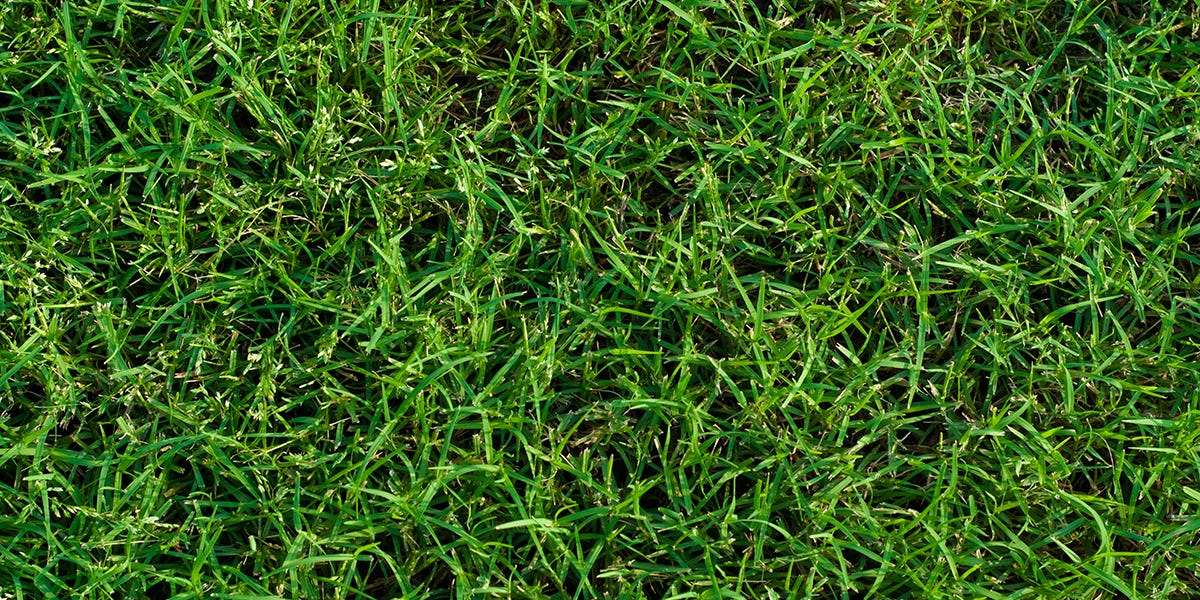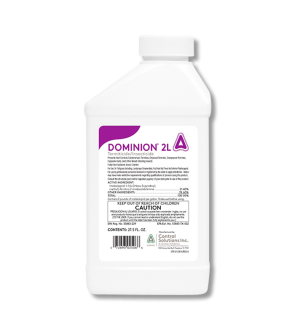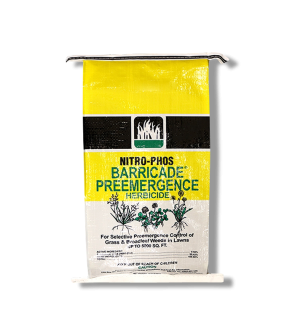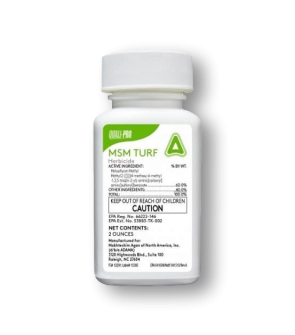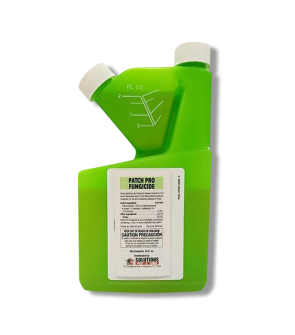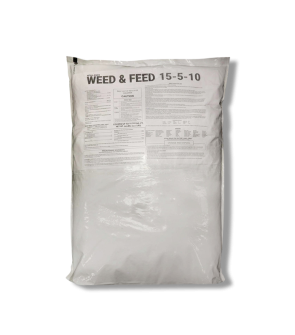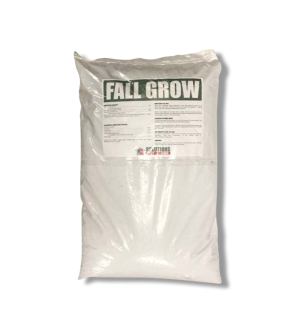Gain access to personalized product screening, the best pricing, rewards, and more!
Most Effective Products
Bermuda Grass Control: How to Maintain Bermuda Grass Yearly
This page is a general yearly maintenance program for Bermuda grass. Using the products and methods suggested, you can get control of your Bermuda grass. Follow this guide and use the recommended products and methods, and we guarantee 100% improvement in your Bermuda grass.
Bermuda Grass is a popular warm-season grass used in the southern region of the United States. This type of grass is ideal for areas with heavy foot traffic due to its ability to repair itself from its creeping stems along the surface (known as stolons) and stems beneath the turf's soil (rhizomes). It can withstand harsh conditions, heat, and drought, though it requires weekly watering to remain healthy.
Despite its name, Bermuda Grass originates in Africa and the Bengal region of India. Traveling Europeans introduced it to the southern half of the United States, making it quickly popular.
Unlike St. Augustine Grass, Bermudagrass cannot grow in shaded areas and must be exposed to consistent sunlight. Like other warm-season grasses, Bermudagrass cannot survive cold temperatures. Bermuda Grass is a perennial plant that does not die after one season and will continue to grow under the right conditions.
If you are trying to maintain a yearly schedule for your Bermuda grass, our DIY schedule guide can help. Our lawn care experts have compiled the instructions below and will explain when and how to treat Bermuda grass.
Identifications
Before considering a treatment approach, correctly identify the grass you are dealing with and confirm whether it is Bermuda. Misidentification can lead to wrong treatment methods, costing you time and money.
- Bermuda Grass has a long root system that penetrates 6 inches below the soil's surface.
- Bermuda Grass has a blue-green texture and grows in dense patches on lawns.
- Stems of Bermuda grass enable it to endure heavy traffic.
- Bermuda Grass spreads rapidly from rhizomes and stolons once established but can also spread from seeds.
- Bermuda Grass can be easily confused with St. Augustine grass, for they both have the same physical qualities. The difference is that Bermuda grass can not grow in shaded areas, and its leaves are shorter than St. Augustine's leaves.
- Bermuda Grass can grow in any soil.
Use the description above and the images to help you correctly identify Bermuda grass. If you are having trouble, send us a photo of your grass, and we will locate it.
Inspection
After confirming that your grass is Bermuda grass, you can proceed with the inspection. In this phase, you must determine where the Bermuda grass is growing and the conditions. This will help you make cultural changes to your lawn and choose where to focus your applications.
When to Inspect
Bermuda Grass is a warm-season grass that will grow from the second half of spring to the end of summer. Bermuda Grass cannot survive cold temperatures and typically begins to wither in winter. This means the grass will germinate from its stolons/rhizomes or sprout seeds in warm soil when temperatures are at 70 degrees Fahrenheit. By late spring (April), Bermudagrass will be apparent within your turf.
What to Look For
Bermuda grass growing on your lawn is hard to miss because it will cover a large portion of your property. Bermuda Grass can grow anywhere in your yard except underneath trees or shaded areas. If it does succeed in these areas, it will be a dull brown color.
Treatment
Before starting any treatment, wear the appropriate personal protective equipment (PPE). If using chemical solutions, keep all children or pets off the treated area until dry.
To maintain a healthy Bermuda grass lawn, it is best to begin in late spring when the grass is young and actively growing.
Step 1: Apply Pre-Emergent Herbicide in Mid-February to Mid-March
To control the appearance of your lawn, apply a pre-emergent herbicide in the middle of February or March.
Typically, your Bermuda grass defense is low from winter dormancy and is more susceptible to weed germinating. Our recommended go-to product is Barricade, which has a broad label that will prevent a wide variety of weeds from growing on your turf. As a granular herbicide, it is cost-effective, and when applied to the dirt, it will create a barrier in the soil that will stop weeds from emerging over the next several months.
Before applying Barricade Pre-Emergence Herbicide, measure the square footage of the area you want to treat. Measure the treatment area's length and width in feet, then multiply them together (length x width = square footage).
Bermuda grass must be applied with 4 pounds of Barricade per 1,000 square feet. Newly sprigged or plugged bermudagrass may be treated, but no more than 2 lbs. per 1,000 sq. ft. At a rate of 2 pounds per 1,000 square feet, a 10 lb. bag of Barricade Herbicide will treat up to 5,000 square feet.
We recommend you use a broadcast spreader to apply the granules evenly across your yard.
Step 2: Irrigate Your Lawn Consistently Throughout Year
Although Bermuda grass tolerates stress from heat, it grows best when watered at least once a week.
Deeply water the roots of Bermuda grass until well-saturated. Probe the soil with a stick to determine if the soil is moist.
It is often necessary to determine the soil's texture. Bermuda grass needs a weekly application of one inch of water. It often requires more frequent watering on sandy soils since it does not hold water well and will dry quickly. Because clay soils accept water slowly, it is not recommended for your lawn to remain consistently moist. If you notice the water is not draining well, do not reapply water until it has been soaked into the soil.
Oversaturation of Bermudagrass can often interfere with its health. Bermudagrass is more susceptible to fungal and weed growth when the turf is consistently wet. To help promote dense growth in your lawn, we recommend Patch Pro for treating fungal diseases and MSM Turf Herbicide for weed control. Both products have a broad label that will help eliminate many species of weeds and fungi.
Proper irrigation will help keep your lawn healthy, which will, in turn, prevent pest problems and lessen stress on your turf in the summer.
Step 3: Fertilize Your Lawn in March and August
Appropriate fertilization from March and August encourages a dense, thick lawn that allows Bermuda grass to tolerate stress from heat, diseases, and insect activity.
The amount of fertilizer you need depends on the current nutrient levels in your Bermuda grass. Your soil should be tested by your local extension office, which is governed by the National Pesticide Information Center, to choose the best fertilizer.
Solutions 15-5-10 Weed & Feed with Trimec is a fertilizer we recommend for this period. This product contains a blend of fertilizer and weed kill that will help control numerous weeds and provide essential nutrients to your turf.
The application rate is 3.2 to 4.0 lbs. of Solutions 15-5-10 Weed & Feed with Trimec per 1,000 sq. ft. One bag of this product will cover up to 15,625 square feet. Of course, depending on the current pH levels in your soil will affect the fertilizer application rates.
Bermuda grass should receive between 2 and 4 lbs of nitrogen per 1,000 sq. ft. You may apply at a higher rate if the Bermudagrass is shown to be grown on sandy soils and at a low rate if it is grown on clay soils.
You will reapply fertilizer in August to help prepare your Bermuda grass for the upcoming winter dormancy.
For fall fertilizer application, use a fertilizer best suited for this period, such as Solutions 8-12-16 Fall Grow Fertilizer. For general application, you can apply 5 lbs. of Solutions 8-12-16 per 1,000 sq. ft. Once applied, wait at least two days before watering to activate the fertilizer.
Step 4: Start Mowing in April
Start mowing when Bermuda grass turns green, typically in late spring (April).
Mowing will help to remove dead grasses from your lawn and stimulate Bermuda grass blades to develop deeper roots.
Maintain a height of 2 inches before you mow your Bermuda grass. If Bermuda grass is cut below two inches, this may result in scalping the lawn. Scalping is when you cut your grass so low that the grass stems are exposed. Mowing is more recommended than scalping, for your turf has fewer chances of error and damage.
At first, you may be mowing at least twice a week, but you will see Bermuda grass growth rates receding in the summer. Frequent mowing when the grass is not high will result in damage and less turf density.
Step 5: Aerating Your Turf in the Second Half of April
Once the frost is completely gone and your turf is out of dormancy (usually in the last two weeks of April), you will aerate it.
Aeration involves drilling holes in the soil to allow air, water, and nutrients to reach the Bermuda grassroots and relieve soil compaction.
Ideally, you will want to use an aeration machine for your turf, but you can also walk around your lawn with an aerator sandal. Lawn aerator sandals are a type of shoe with spikes at the bottom that poke holes into your grass as you walk. This method is more cost-efficient and easy to use.
Step 6: Apply Insecticide Product in May
Apply an insecticide in the last two weeks of April or the first two weeks of May.
During this period, insects become active, and larvae can be seen within your lawn. Common insects in Bermuda grass are white grubs, mites, may beetles, and fire ants.
Before choosing an insecticide product, correctly identify the insect residing in your lawn for effective insect control. You cannot determine the best treatment strategy without knowing which pest may be harming your Bermuda grass.
To effectively eliminate insects, we recommend Dominion 2L. This systemic insecticide absorbs into treated plants and translocates through the plant tissue. It effectively kills insect pests that feed on the treated foliage while keeping your grass safe.
Calculate the square footage of the treatment area for flowers and ground cover to determine how much Dominion 2L you will need. Measure the treatment areas' length and width in feet, then multiply them together (length x width = square footage).
Dominion 2L must be applied at 0.4 to 0.6 fluid ounces per 1,000 square feet with at least 10 gallons of water.
For example, if you had measured a 1,500 sq. ft. area for treatment, you would need to apply 0.6 to 0.9 fl. oz. of Dominion 2L in at least 20 gallons of water.
To mix, add half the water into the pump sprayer, add your measured amount of Dominion 2L, then add the remaining half and close the sprayer. Shake the sprayer to agitate and pump to produce a low-pressure spray.
Key Takeaways
- Bermuda Grass is a fast-growing and aggressive perennial grass known to grow above and below ground.
- Our top recommendation for treating Bermuda grass with fertilizer is Weed & Feed with Trimec in the spring and the Solutions 8-12-16 Fall Fertilizer for the late fall.
- Maintaining a regular lawn care schedule and promoting a lush green, nutrient-rich turf, weeds, insects, and other environmental factors will make establishing themselves on your Bermuda grass difficult.
-
Q:Do you need to water directly or soon after applying 15-5-10 Weed & Feed?3/11/25A:It is actually best to apply when the grass is a little moist, like after morning dew. If grass is not moist at time of application, sprinkle lightly with water to hold the material and prevent dust drift onto nontarget plants. Do not wash from weed leaves for 1 to 2 days after application. At this time, a thorough watering should be made.
Colin Travis
3/13/25 -
Q:Instead of using herbicide, is there a granule solution.4/5/24A:Yes, Barricade is a granular pre-emergent. This is great for preventing weed germination in Bermudagrass.
Colin Travis
4/15/24






